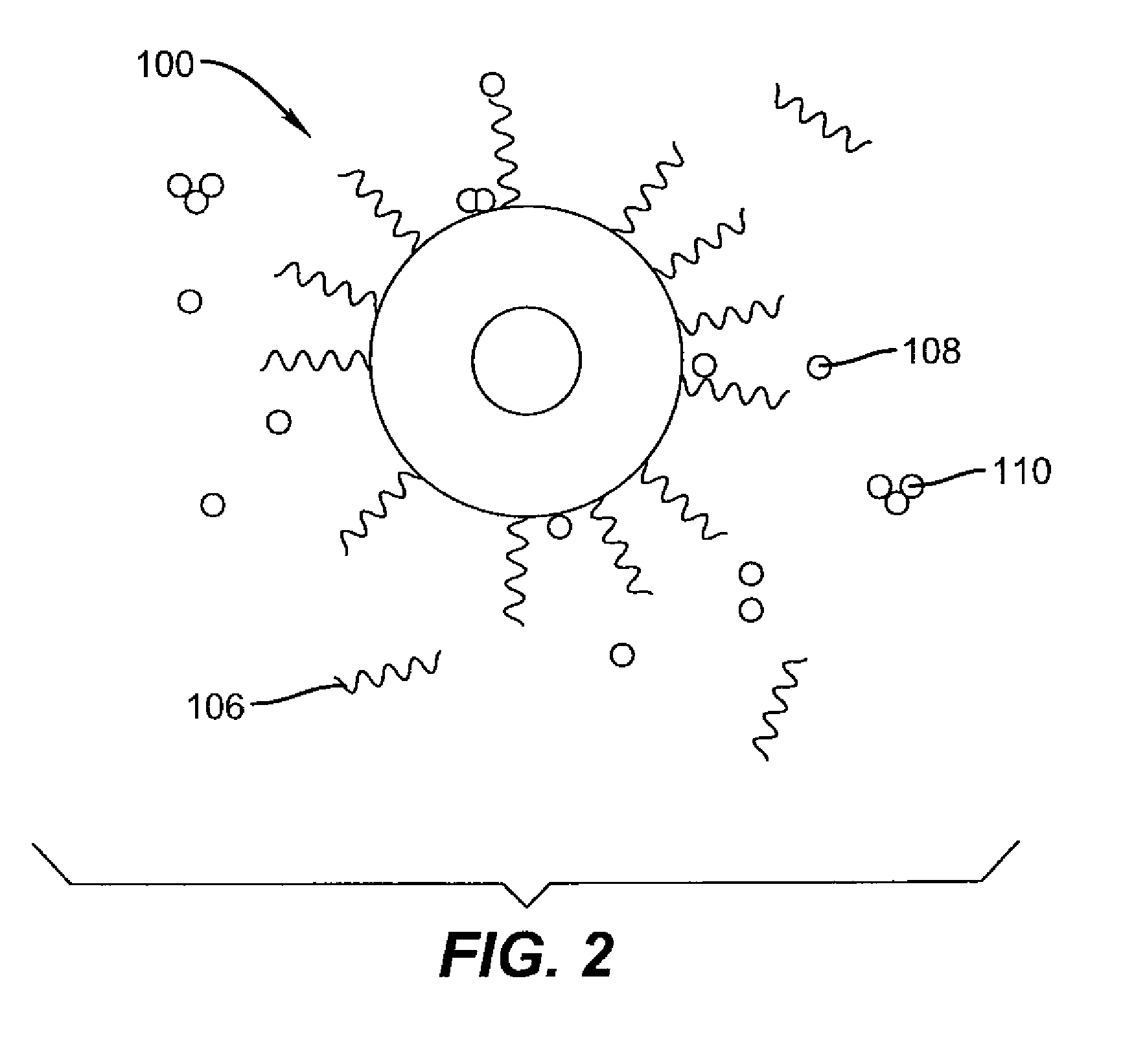Light-emitting nanocomposite particles
a technology of nanocomposite particles and light-emitting layers, which is applied in the direction of electric lighting sources, semiconductor devices, and light sources. it can solve the problems of high manufacturing cost, high cost and rigid substrates, and difficulty in combining multi-color output from the same chip, so as to enhance enhance the electrical connection. effect, the effect of enhancing the conductivity of the light-emitting layer
- Summary
- Abstract
- Description
- Claims
- Application Information
AI Technical Summary
Benefits of technology
Problems solved by technology
Method used
Image
Examples
example 1
Preparation of Light-Emitting Nanocomposite Particles and Formation of a Light-Emitting Layer
Preparation of Quantum Dots
[0088]CdSe / ZnSeS core shell quantum dots were prepared by the following procedure. Standard Schlenk line procedures were followed for the synthesis. CdSe cores were formed following the green synthesis procedure of Talapin et al. (D. V. Talapin et al., J. Phys. Chem. B108, 18826 (2004)). More specifically, 532 nm emitting CdSe cores were obtained after vigorously stirring the reaction mixture at 260° C. for 7.5 minutes. After cooling the CdSe crude solution back to room temperature, 4 ml of TOPO and 3 ml of HDA were added to 1.5 ml of crude solution (unwashed) in a Schlenk tube. After degassing the mixture at 110° C. for 30 minutes, the solution was brought up to 190° C. under argon overpressure and constant stirring. With the shell composed of ZnSeS, precursors of Zn, Se, and S were prepared in a dry box. The Zn precursor was 1 M diethylzinc in hexane, the Se prec...
example 2
Comparative Separation of Quantum Dots from a Solvent
[0095]A crude solution containing only core / shell quantum dots (the same ones used in Example 1), having nonvolatile TOPO, HDA, and TOP ligands, was ligand exchanged (exchange to pyridine ligand) in substantially the same manner as described in the first section of Example 1. No substantial problems were encountered in the first washing (with toluene and methanol). As such, a plug could be formed following centrifuging and the resulting supernatant was clear. Next pyridine was added as before and the mixture was stirred at 80° C. for 24 hours. Problems arose when the exchanged solution was washed with hexane (as before) and centrifuged to obtain a plug. Despite centrifuging at much greater rates than in Example 1, only a very small plug could be obtained. In fact, exposing the supernatant to UV light revealed that the majority of quantum dots remained in solution (greater than 75%).
[0096]Example 2 illustrates the difficulty of iso...
PUM
| Property | Measurement | Unit |
|---|---|---|
| temperature | aaaaa | aaaaa |
| boiling point | aaaaa | aaaaa |
| bandgap energy levels | aaaaa | aaaaa |
Abstract
Description
Claims
Application Information
 Login to View More
Login to View More - R&D
- Intellectual Property
- Life Sciences
- Materials
- Tech Scout
- Unparalleled Data Quality
- Higher Quality Content
- 60% Fewer Hallucinations
Browse by: Latest US Patents, China's latest patents, Technical Efficacy Thesaurus, Application Domain, Technology Topic, Popular Technical Reports.
© 2025 PatSnap. All rights reserved.Legal|Privacy policy|Modern Slavery Act Transparency Statement|Sitemap|About US| Contact US: help@patsnap.com



